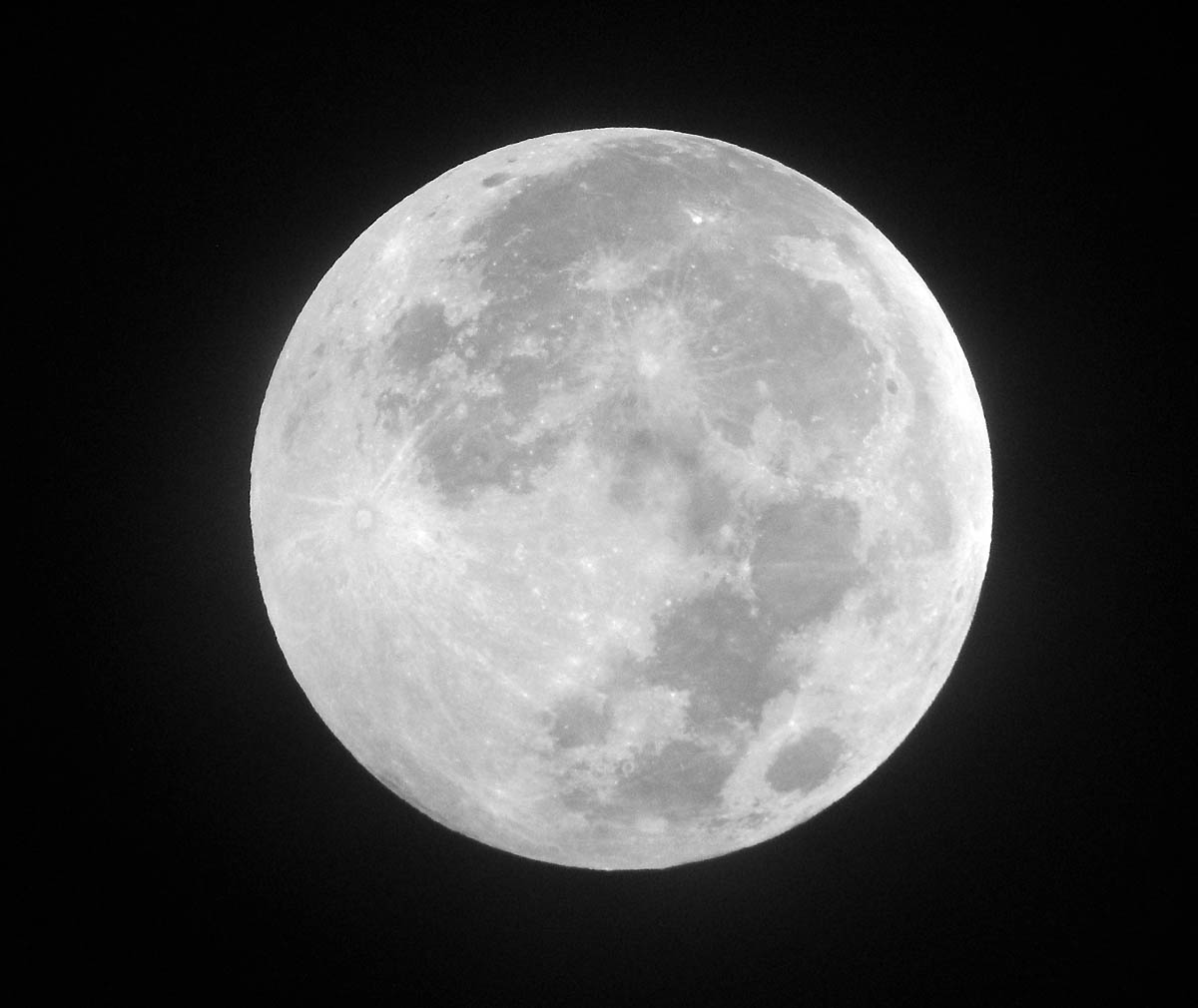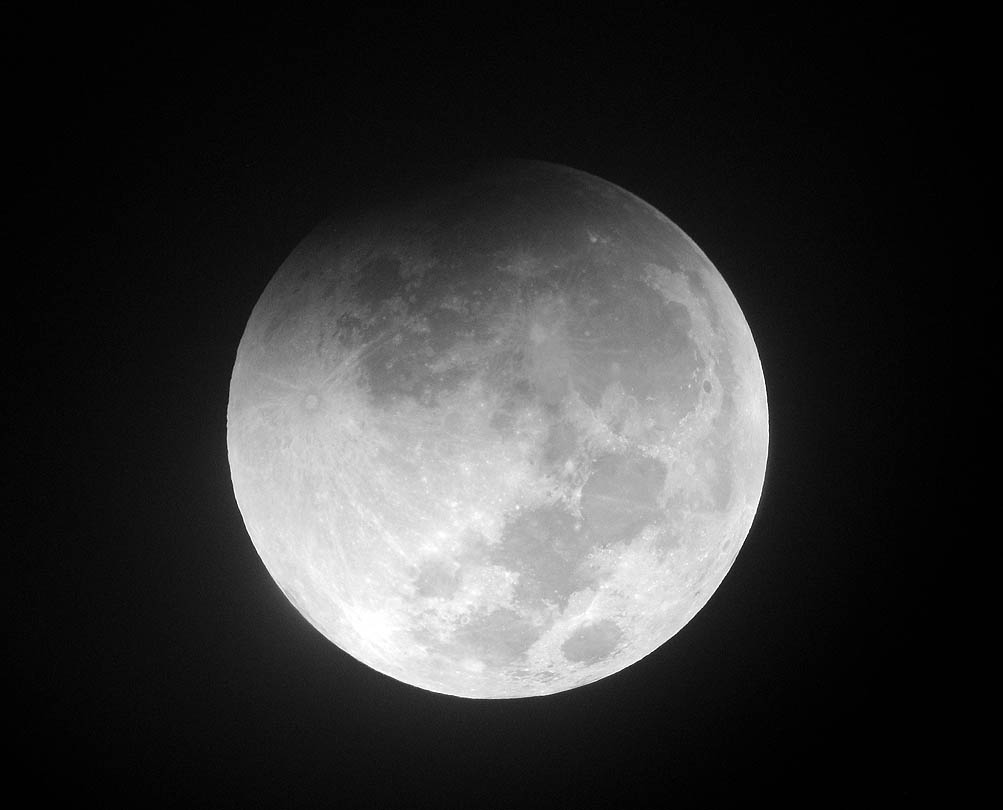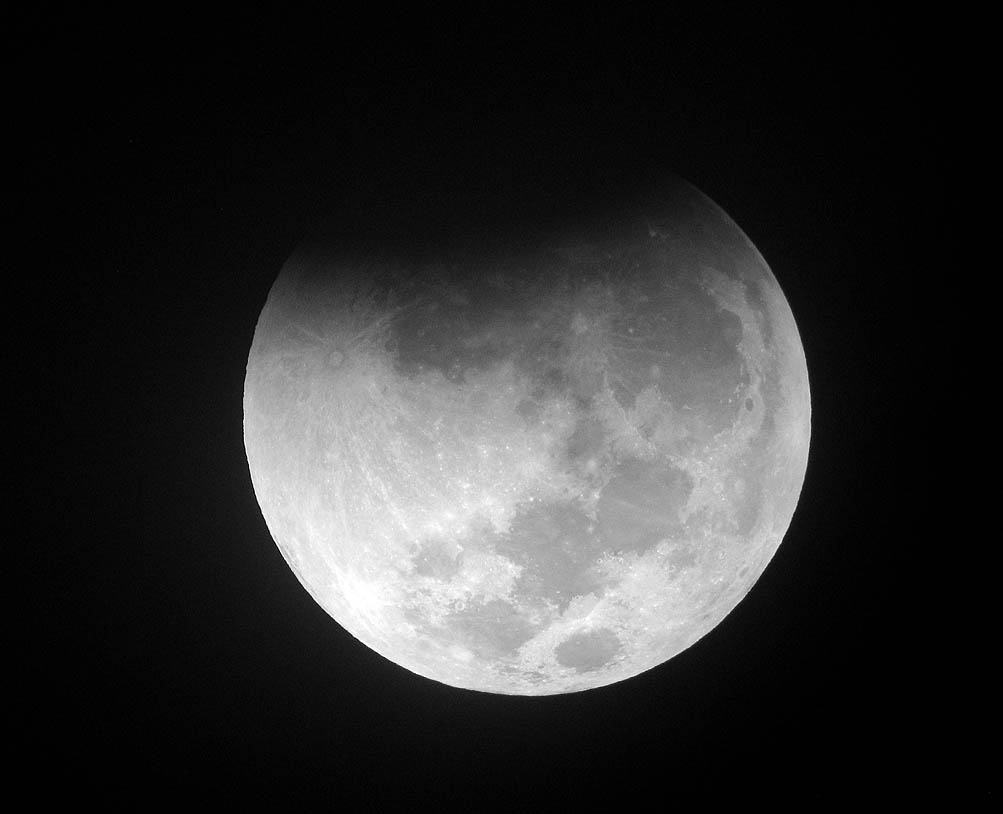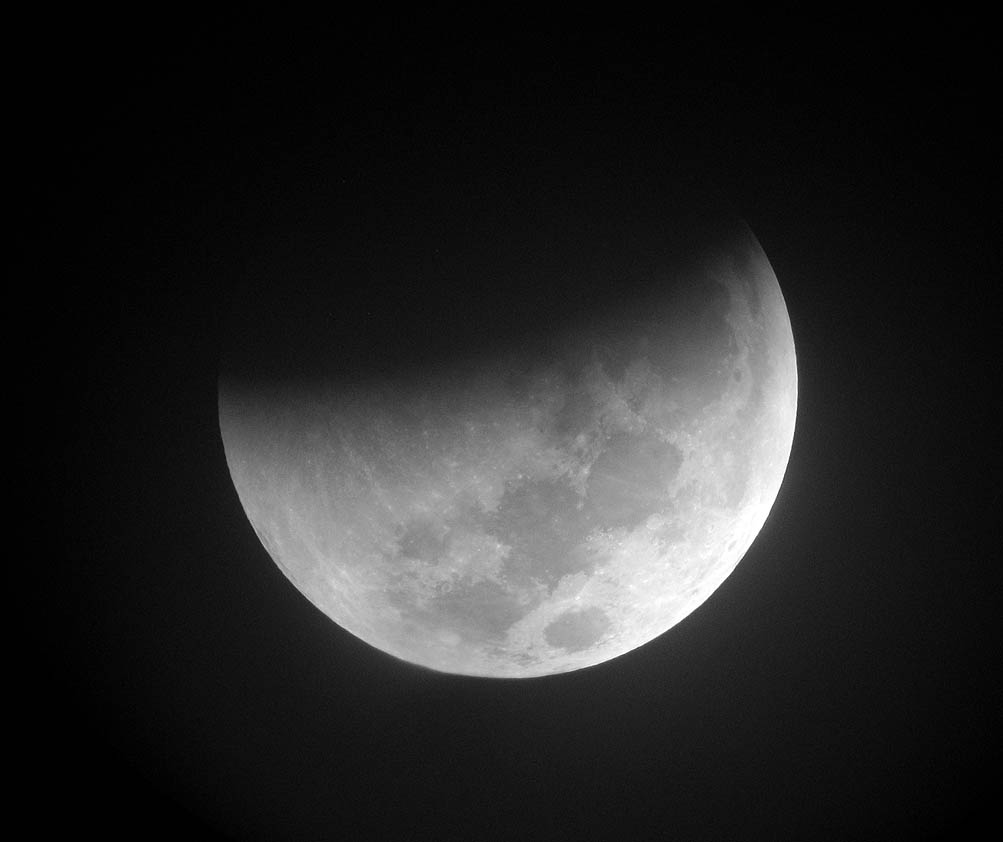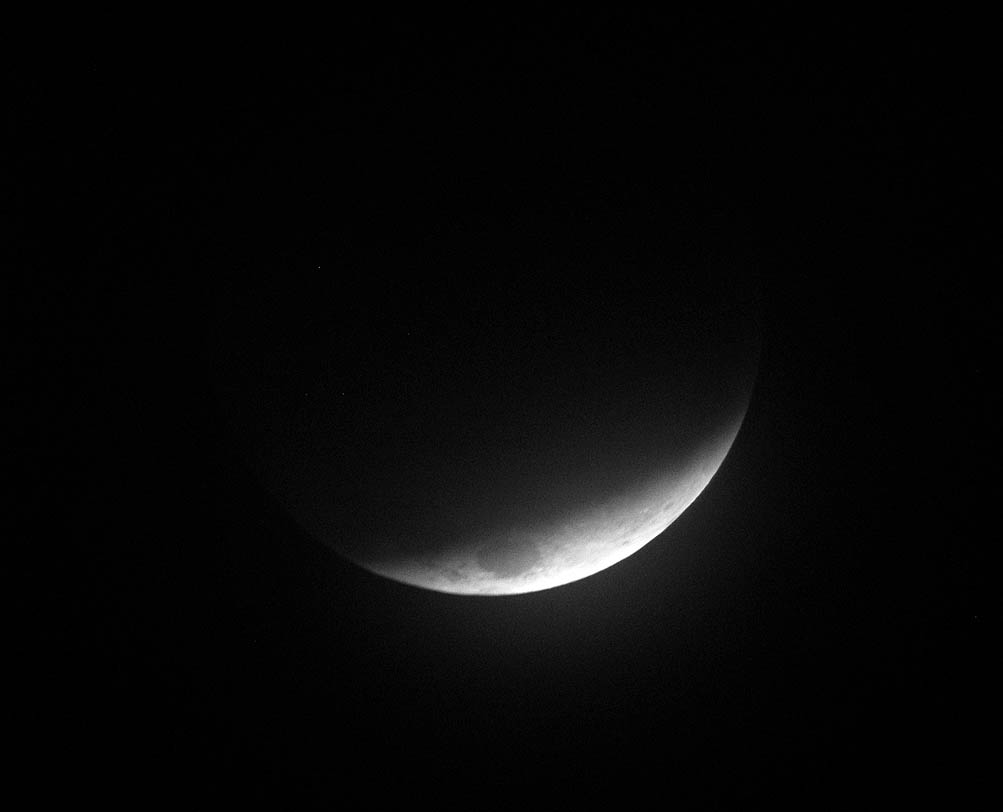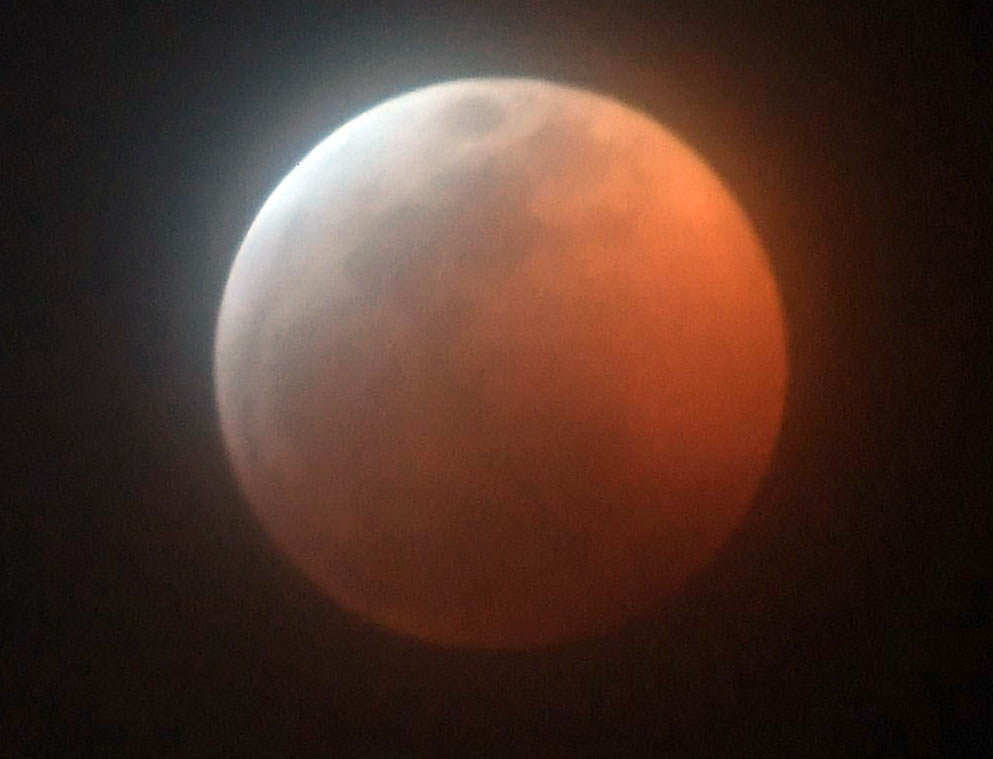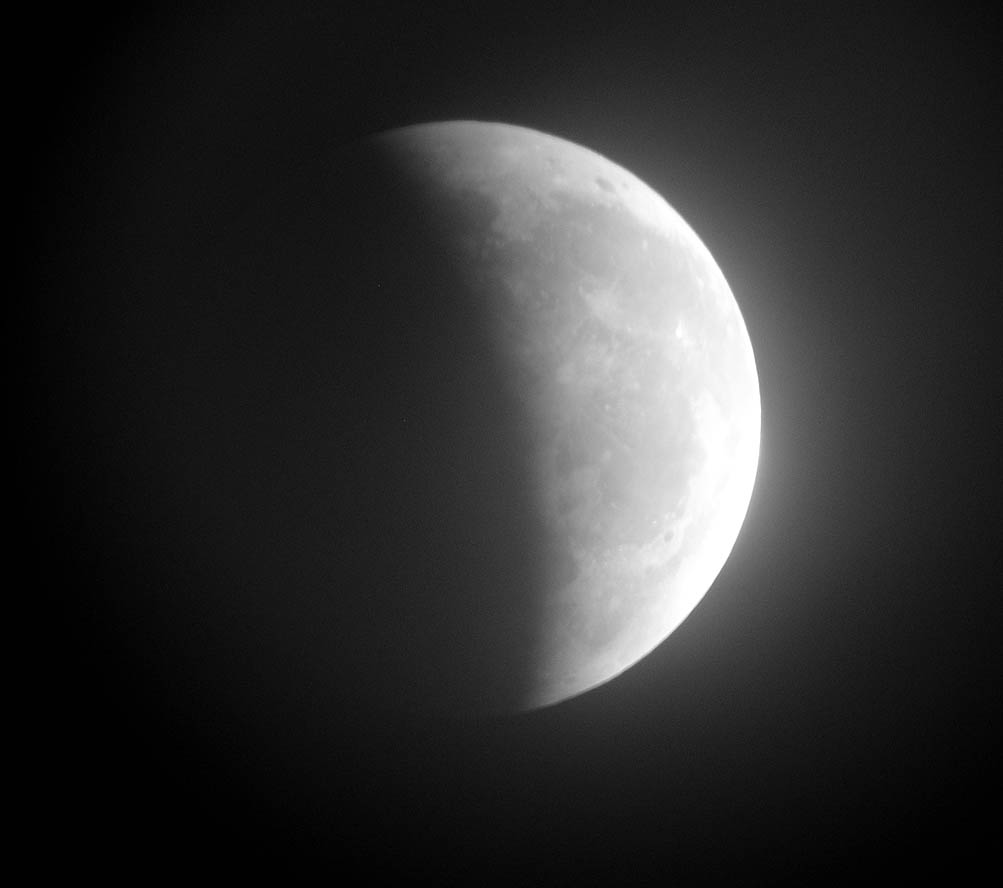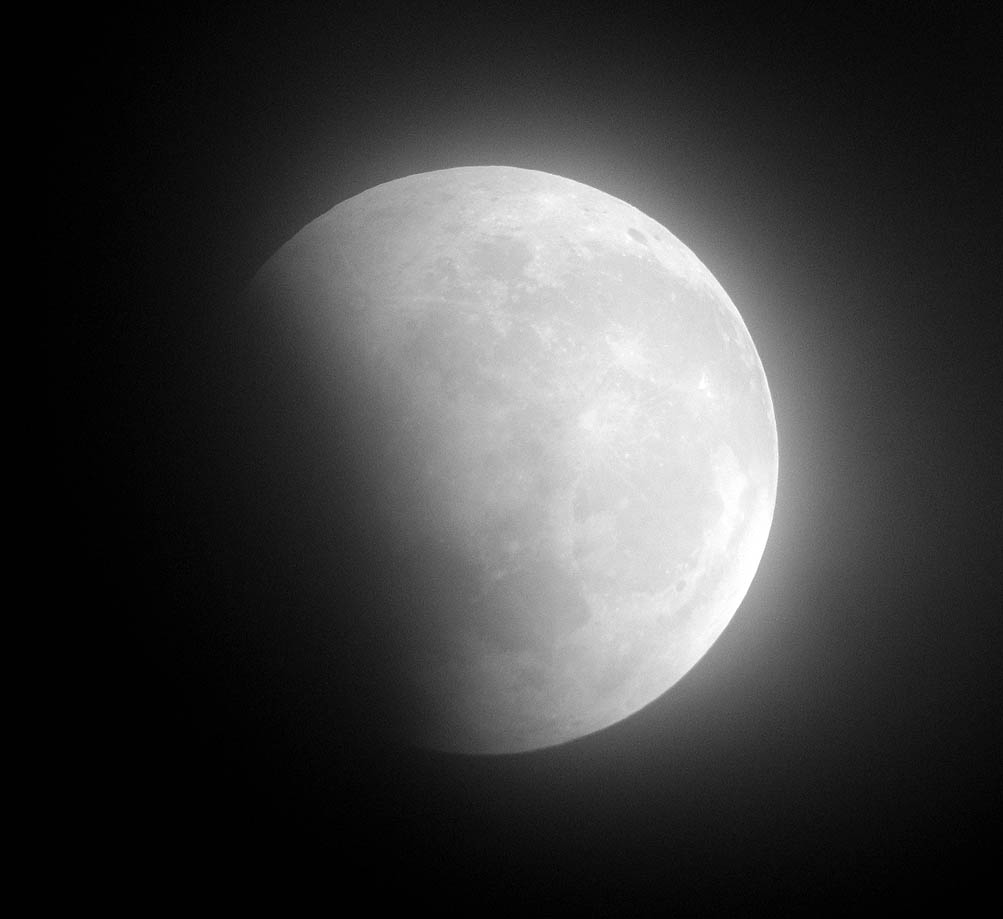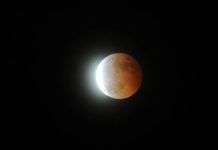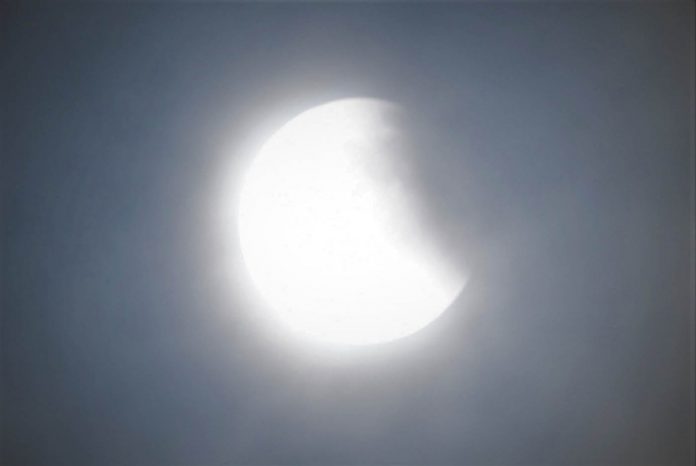
A so-called Super Moon occurs when a full (or new) moon occurs at a point nearest in its orbit around the Earth (perigee), making it appear larger than normal. January’s full moon is traditionally called the Wolf Moon, the first full moon of the year.
A Blood Moon occurs during a total lunar eclipse when the moon’s surface is painted a coppery, or in some instances, a blood-red hue by sunlight refracting through the Earth’s atmosphere. The occurrence of the three events results in a Super Blood Wolf Moon.
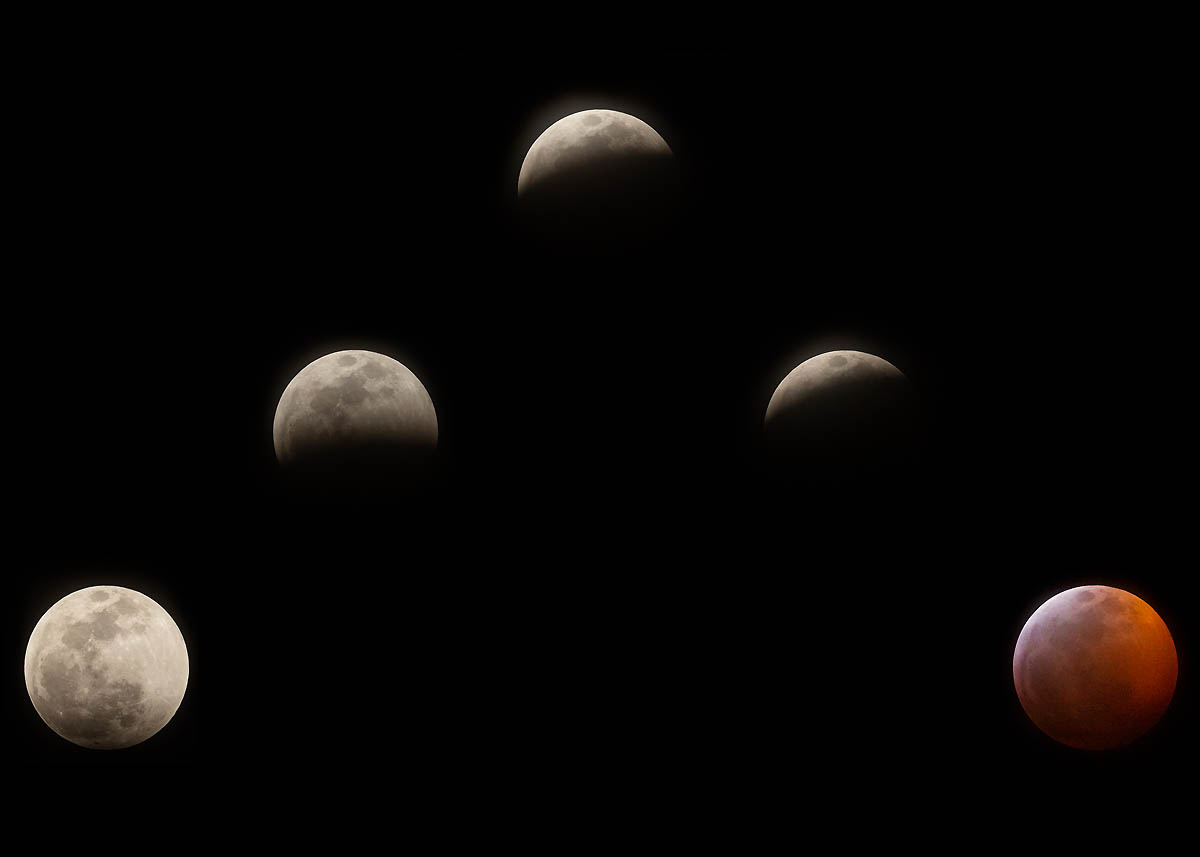
Though clouds prevented many in the region from enjoying Sunday’s total lunar eclipse through its full duration, some backyard viewers were treated to clear patches of sky leading up to totality.
Viewers from Chula Vista’s downtown district were able to witness the progression of Sunday’s total lunar eclipse until incoming clouds ruined the celestial spectacle just prior to totality.
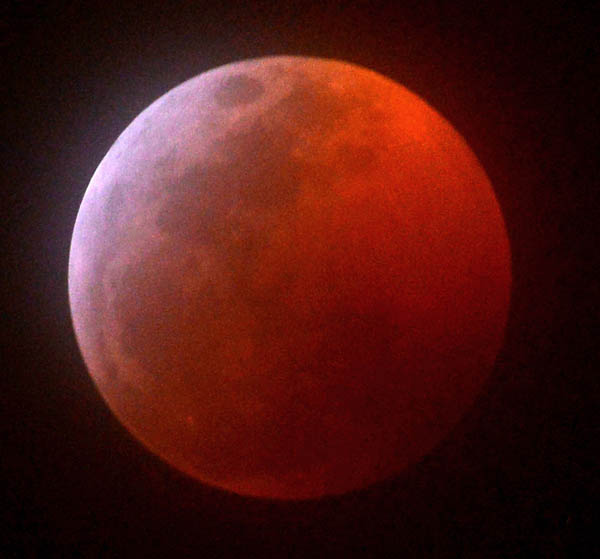
Full Moons in 2019
Native Americans gave names to the full moons throughout the year based on cyclic occurrences in nature and in the sky.
Medieval Europeans also gave names to the various full moons, including the Wolf Moon.
Jan. 20: Wolf Moon
Feb. 19: Snow Moon
March 20: Worm Moon
April 19: Pink Moon
May 18: Flower Moon
June 17: Strawberry Moon
July 16: Buck Moon
Aug. 15: Sturgeon Moon
Sept. 14: Harvest Moon
Oct. 13: Hunter’s Moon
Nov. 12: Beaver Moon
Dec. 12: Cold Moon
Photo Gallery by Phillip Brents
